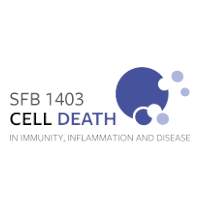Structure-guided multivalent nanobodies block SARS-CoV-2 infection and suppress mutational escape
Koenig,P.-A., Das, H., Liu, H., Kümmerer, B. M., Gohr, F. N., Jenster, L.-N., Schiffelers, L. D. J., Tesfamariam, Y. M., Uchima, M., Wuerth, J. D., Gatterdam, K., Ruetalo, N., Christensen, M., H., Fandrey, C. I., Normann, S., Tödtmann, J. M. P., Pritzl, S., Hanke, L., Boos, J., Yuan, M., Zhu, X., Schmid-Burgk, J.-L., Kato, H., Schindler, M., Wilson, I. A., Geyer, M., Ludwig, K. U., Hällberg, B. M., Wu, N. C., Schmidt, F. I.
Abstract:
The severe acute respiratory syndrome coronavirus 2 (SARS-CoV-2) pandemic continues to spread with devastating consequences. For passive immunization efforts, nanobodies have size and cost advantages over conventional antibodies. Here, we generated four neutralizing nanobodies that target the receptor-binding domain of the SARS-CoV-2 spike protein. We defined two distinct binding epitopes using x-ray crystallography and cryo-electron microscopy. Based on the structures, we engineered multivalent nanobodies with more than 100-fold improved neutralizing activity than monovalent nanobodies. Biparatopic nanobody fusions suppressed the emergence of escape mutants. Several nanobody constructs neutralized through receptor-binding competition, while other monovalent and biparatopic nanobodies triggered aberrant activation of the spike fusion machinery. These premature conformational changes in the spike protein forestalled productive fusion, and rendered the virions non-infectious.
Read more in Science. 2021 Jan 12
